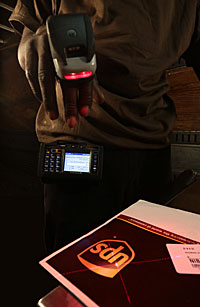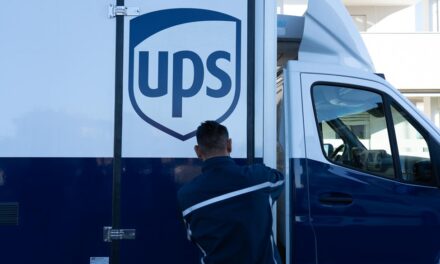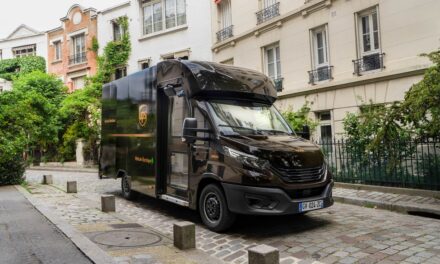
UPS speeds up package scanning with finger imagers
UPS has introduced a new wearable scanning system for its employees, which it says should accelerate the loading of packages into vehicles. The device – made by Motorola Solutions – takes the form of a ring imager worn on a finger, which staff use to scan packages. The ring feeds scan information to a terminal worn on the employee’s wrist or hip.
UPS said the RS507 Bluetooth ring imager was a “major advance” that would allow staff to scan packages more quickly than the current point-and-shoot scanning technology.
The world’s largest package delivery company receives 32.1m tracking requests from its customers via its ups.com website every day, and the scanning of items by its staff is crucial to maintaining this visibility.
Deploying the new technology from last year, UPS now has 28,000 ring imager systems in operation within 480 facilities.
The company said today it expects the deployment to be completed by the fourth quarter of 2013, with more than 38,000 ring imagers to be used at 1,383 facilities.

UPS says its ring scanners mean faster and more accurate scanning of packages
The new equipment transfers tracking information from the finger-mounted scanners to a worker’s terminal via Bluetooth wireless technology, with the data then sent to UPS global data centers via facility Wi-Fi networks.
The scanning systems capture tracking and destination information from both traditional one-dimensional barcode information and more state-of-the-art two-dimensional barcodes.
As well as feeding back shipment status to customers, the scans ensure packages go to the right place and are loaded correctly to avoid service disruptions.
“Higher performance”
Juan Perez, the UPS vice president of information services, said UPS was always looking for new ways to improve delivery reliability and provide accurate information to customers.
“Effectively deploying mobile and pervasive computer technologies like this allows us to achieve those goals, with higher performance, and a more rugged, longer-lastering piece of hardware,” he said.
Girish Rishi, the corporate vice president and general manager of mobile computing at Motorola Solutions, said: “The RS507 Bluetooth ring imager, in combination with our robust wireless network and wearable mobile computer, increases scanning efficiency and streamlines the barcode reading process, ultimately improving worker output and cost efficiencies.”













Its a cool innovation, but what is the expected cost of lost and damaged scanners? This is why we decided against pursuing a similar technology.
NdependentCouriers